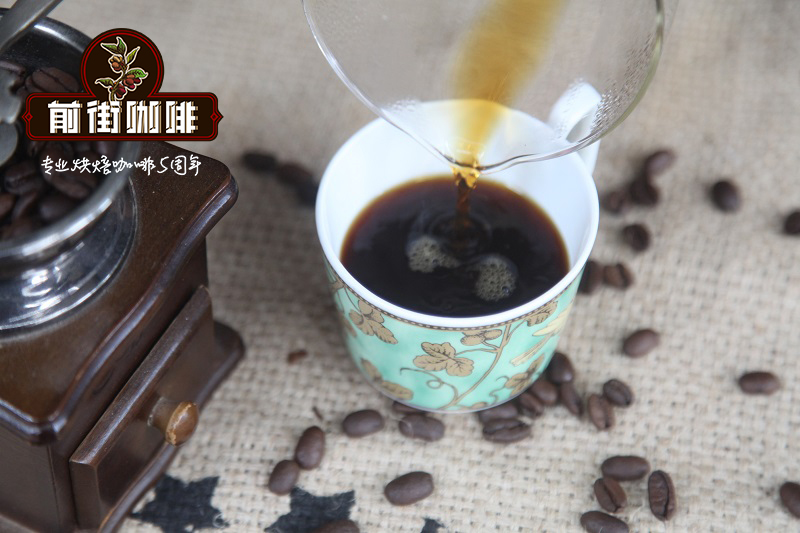Which Hawaiian coffee is good? how do you make Hawaiian coffee? what's the flavor of Hawaiian Kona coffee?

Professional coffee knowledge exchange more coffee bean information please follow the coffee workshop (Wechat official account cafe_style)
Hawaii's coffee bean reputation mainly comes from "Kona". If you like typical island coffee with less acidity, more consistency and less fruit flavor, other islands are also worth exploring.
Over the years, Hawaii Big Island Cafu has been highly rated internationally, and the Annual Coffee Competition (Coffee of the Year) of the SCAA Coffee Show in the United States has been selected into the Top 10 position several times. Besides different climatic conditions, high altitude is one of the advantages of Hawaii Big Island-Kona.
Hawaiian Kona coffee beans are grown along the western coast of the Big Island of Hawaii and are bred in the unique fertile volcanic soil. Known for their exquisite quality and elegant and delicate flavor, Hawaii Coffee beans are another top representative of the world coffee map, almost comparable to the Blue Mountains in terms of rarity or cost.
Coffee beans grow in a period of time, and the places that have grown this year will not grow again next year, so the branches will grow longer and longer, one at a time, and of course they will mop the floor when they grow a long time. So the whole tree is cut down about every five or six years, but the roots are reserved for it to grow again.
Coffee trees don't really need to be taken care of. KONA Coffee is famous because it is only suitable for growing coffee in the "certain mountain area" of KONA. Partly because of the volcanic soil properties of Hawaii, and partly because of the wonderful weather in KONA, which is sunny during the day but showers begin after noon, these coffee trees can grow well without watering! In addition, kona coffee and Blue Mountain coffee actually use the same Arabica (Arabica) tree species, but because of climate, altitude, soil differences give it a completely different flavor.
Hawaiian coffee is produced every year from July, August to January, and the average coffee tree can produce less than a pound of coffee.
Like other parts of the Hawaiian Islands, the island also provides ideal climatic conditions for the cultivation of coffee beans. But the coffee beans produced by that are different, and it has a good reputation as "worldwide coffee". This is probably due to the fact that Kona Island is rich in volcanic black mud with moderate acidity, rich mineral content and suitable water content. And every afternoon, a cloud floats over the island to block out the sun to protect fragile coffee saplings.
But what is special about that coffee is that every coffee bean is hand-picked to ensure that only the best quality beans can be used in coffee production. In fact, 100% pure Kona coffee is rare and sometimes hard to find. The rarest coffee beans are beads (round beans with a single pod), which account for only 4% and 5% of the total annual output of Kona coffee beans. What is special about beaded coffee beans is that each coffee fruit contains only one coffee bean, while other types of Kona coffee fruit contain two coffee beans.
The Hawaiian coffee on Qianjie is from the KONA producing area. It perfectly deduces the characteristics of Kona with medium roasting. It exudes extremely complex sweet aromas of cashew, milk, peanuts, mulberry and tropical fruits. The taste is mild and soft, clear and clear, and the acidity is bright and elegant. I like the special flavor of KONA coffee very much.
The recommended brewing parameters of Qianjie coffee:
V60ap90 ℃ / 1 15 / time two minutes
Flavor: Mulberry, sucrose, tropical fruit
Important Notice :
前街咖啡 FrontStreet Coffee has moved to new addredd:
FrontStreet Coffee Address: 315,Donghua East Road,GuangZhou
Tel:020 38364473
- Prev

Panamanian Coffee theme _ the Story of Pokuit Flower Butterfly
Professional coffee knowledge exchange more coffee bean information please follow the coffee workshop (Wechat official account cafe_style) Panama is a Central American country bordered by Costa Rica to the west and Colombia to the east. Anyone who knows anything about individual coffee should know that Panamanian coffee is famous in the coffee world as the geisha Geisha (the name of Rosa) in the Emerald Manor. It can be said to be a
- Next

How to brew Colombian la Casina la casiana coffee beans after washing and drying in the sun? Wind
Professional coffee knowledge exchange more coffee bean information please follow the coffee workshop (Wechat official account cafe_style) after washing and sun drying Colombia Lakasina la casiana coffee beans how to brew? Flavor description and characteristics? La Casiana in Antioquia is located in Colombia-about 140miles (225km) northwest of the country's capital Bogota. La C
Related
- Detailed explanation of Jadeite planting Land in Panamanian Jadeite Manor introduction to the grading system of Jadeite competitive bidding, Red bid, Green bid and Rose Summer
- Story of Coffee planting in Brenka region of Costa Rica Stonehenge Manor anaerobic heavy honey treatment of flavor mouth
- What's on the barrel of Blue Mountain Coffee beans?
- Can American coffee also pull flowers? How to use hot American style to pull out a good-looking pattern?
- Can you make a cold extract with coffee beans? What is the right proportion for cold-extracted coffee formula?
- Indonesian PWN Gold Mandrine Coffee Origin Features Flavor How to Chong? Mandolin coffee is American.
- A brief introduction to the flavor characteristics of Brazilian yellow bourbon coffee beans
- What is the effect of different water quality on the flavor of cold-extracted coffee? What kind of water is best for brewing coffee?
- Why do you think of Rose Summer whenever you mention Panamanian coffee?
- Introduction to the characteristics of authentic blue mountain coffee bean producing areas? What is the CIB Coffee Authority in Jamaica?

